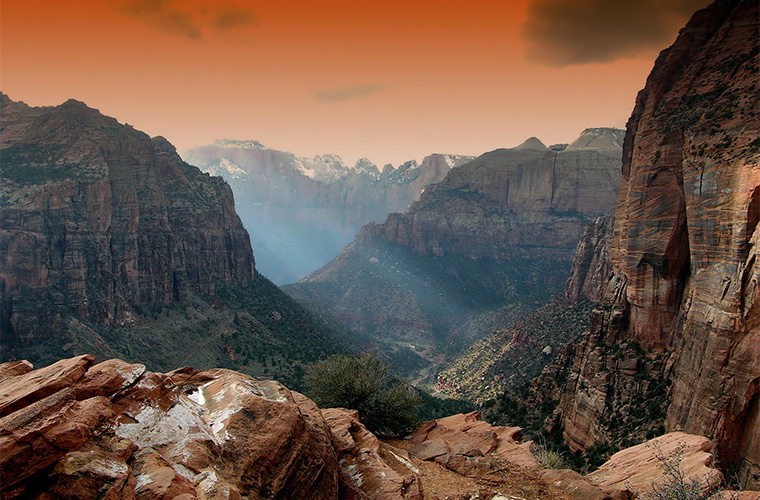Main Menu
- Home
- Product Finder
- Calibration Systems
- Calibration Services
- Digital Sensing
- Industrial Vibration Calibration
- Modal and Vibration Testing
- Non-Destructive Testing
- Sound & Vibration Rental Program
- Learn
- About Us
- Contact Us
 The mission of the National Parks in
the United States is to preserve the natural and cultural treasures for future generations. Have you ever considered that the soundscape of a park is a part of that treasure and important both to the visitor experience and to wildlife management?
Because of this, it is essential to protect, maintain, and restore natural acoustical environments.
The mission of the National Parks in
the United States is to preserve the natural and cultural treasures for future generations. Have you ever considered that the soundscape of a park is a part of that treasure and important both to the visitor experience and to wildlife management?
Because of this, it is essential to protect, maintain, and restore natural acoustical environments.
Charged with measuring and protecting the unique soundscape of each park, the Natural Sounds and Night Skies Division of the National Park Service collects data in both heavily visited and remote areas. Interested in how these measurements are made? Watch this video. Efforts are underway to preserve not only the sights, but also the sounds that make up our natural and cultural history. From measuring current baseline levels to studying the impact of construction inside the park and activities around park borders, the National Park Service is serious about noise.
Essential animal behaviors such as predation, communication, avoiding predators, and mating rituals can be adversely affected by noisy environments. Long- and short-term noise studies are carried out to supply baseline data and allow for the development of responsible noise management plans. Sound studies allow potential equipment purchases to be evaluated in terms of the noise produced.
Today, noise consultants and park employees are carrying out long-term noise studies using reliable and energy-efficient noise monitoring solutions from Larson Davis[1]. The Modal Shop offers for rent a family of noise monitoring systems with various power, communication, and sound recording options that can be implemented to suit the needs of various types of park and wildlife noise studies. These systems provide short to long term monitoring capabilities for collecting a variety of data, from basic noise measurements, to GPS and weather data utilizing the Model 831C SoundAdvisor, Model 831, or LxT sound level meters in lightweight, easy to deploy packages. Model 831C SoundAdvisor, Model 831, and LxT can also be used in the normal handheld mode for walk-around measurements onsite. Using DNA software from Larson Davis, the collected data can be further organized into meaningful reports to understand the patterns or nuances of noise in parks.
Using Larson Davis solutions from The Modal Shop allows for quick deployment of monitoring stations to understand noise inside parks and, if needed, to take steps to remedy any problems. The Modal Shop’s experienced rental team is available to help you find just the right equipment for your testing needs. The Rental Team offers several kit configurations and options for park and wildlife noise monitoring. See the Sound Level Meter Selection Guide for a comparison chart of available meters. Our team is happy to help you mix and match meters, microphones, batteries, and more to find a test setup that fits your requirements.
| Model | Recording Duration with Recommended Power | Recommended Power | Wireless Connectivity | Alerts |
|---|---|---|---|---|
| NMS044 | Indefinite | Solar | 24/7 Network Access | ✓ |
| NMS-831 | Short-term (typically 7-9 days) | Sealed lead acid / D-cell battery pack | ||
| NMS-SE-FF | Short-term (typically 15 days) | D-cell battery pack | ||
| 831C | Handheld & Attended Measurements | Rechargeable AA batteries | 24/7 Network Access | ✓ |
| 831 | Handheld & Attended Measurements | Rechargeable AA batteries | ||
| LxT | Handheld & Attended Measurements | Rechargeable AA batteries |
Note that the Model 378A04 low noise microphone can be paired with Model 831C or Model NMS044 for ultra low-noise measurements. Please contact us for selection assistance or with any further questions at rentalteam@modalshop.com or 513.351.9919.
[1]A few examples of papers written with data collected on Larson Davis equipment are cited below:
The views and opinions expressed in this article are those of the author / The Modal Shop, and do not necessarily represent the official policy or position of the National Park Service.